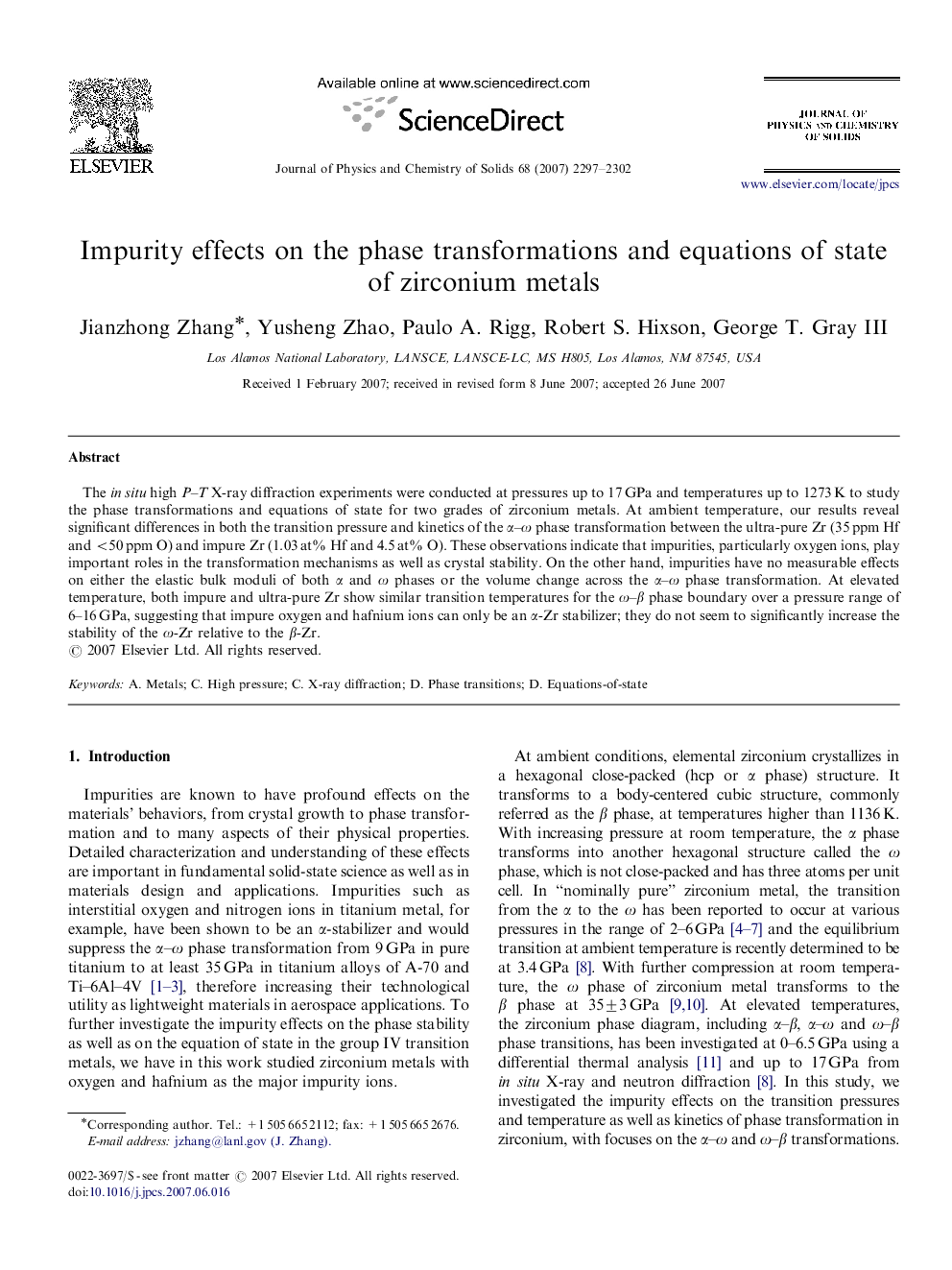| Article ID | Journal | Published Year | Pages | File Type |
|---|---|---|---|---|
| 1518538 | Journal of Physics and Chemistry of Solids | 2007 | 6 Pages |
The in situ high P–T X-ray diffraction experiments were conducted at pressures up to 17 GPa and temperatures up to 1273 K to study the phase transformations and equations of state for two grades of zirconium metals. At ambient temperature, our results reveal significant differences in both the transition pressure and kinetics of the α–ω phase transformation between the ultra-pure Zr (35 ppm Hf and <50 ppm O) and impure Zr (1.03 at% Hf and 4.5 at% O). These observations indicate that impurities, particularly oxygen ions, play important roles in the transformation mechanisms as well as crystal stability. On the other hand, impurities have no measurable effects on either the elastic bulk moduli of both α and ω phases or the volume change across the α–ω phase transformation. At elevated temperature, both impure and ultra-pure Zr show similar transition temperatures for the ω–β phase boundary over a pressure range of 6–16 GPa, suggesting that impure oxygen and hafnium ions can only be an α-Zr stabilizer; they do not seem to significantly increase the stability of the ω-Zr relative to the β-Zr.
